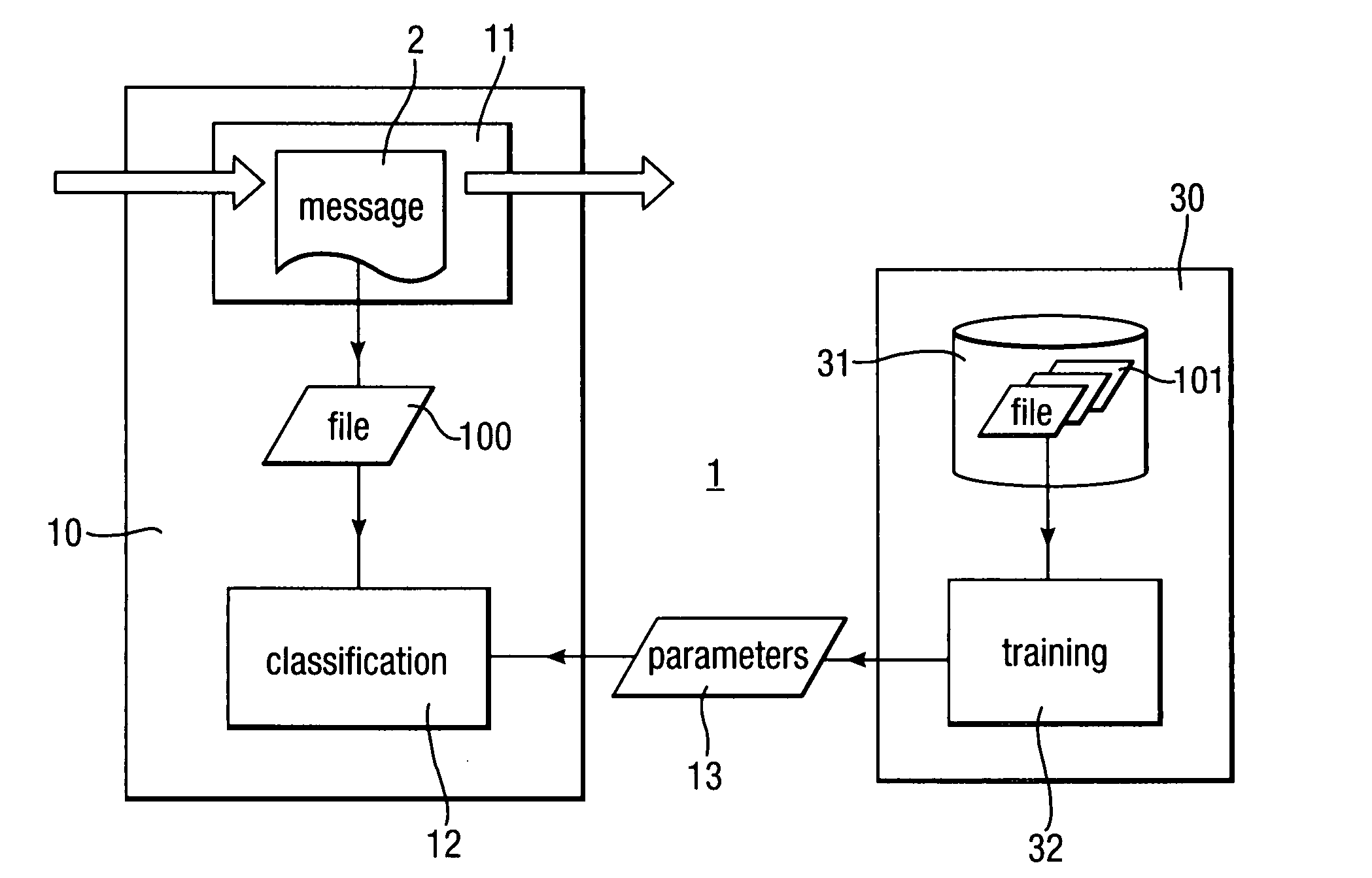Heuristic detection of malicious code
a malicious code and heuristic detection technology, applied in the field of computer file scanning, can solve the problems of large size of conventional malware signature database, serious problem of malicious code in the computing field, and low false positive rate of malicious code, and achieve the effect of low false positive rate, high detection rate and powerful and effectiv
- Summary
- Abstract
- Description
- Claims
- Application Information
AI Technical Summary
Benefits of technology
Problems solved by technology
Method used
Image
Examples
Embodiment Construction
[0036]A scanning system 1 for scanning messages 2 passing through a network is shown in FIG. 1. The messages 2 may be emails, for example transmitted using SMTP or may be messages transmitted using other protocols such as FTP, HTTP, IM, SMS, MMS and the like.
[0037]The scanning system 1 scans the messages 2 for computer files 100 to detect malicious programs hidden in the files 100. The scanning system 1 is provided at a node of a network and the messages 2 are routed through the scanning system 1 as they are transferred through the node en route from a source to a destination. The scanning system 1 may be part of a larger system which also implements other scanning functions such as scanning for viruses using signature-based detection, heuristic analysis and / or scanning for spam emails.
[0038]However, although this application is described for illustrative purposes, the scanning system 1 could equally be applied to any situation where malware might be hidden inside files 100, and whe...
PUM
 Login to View More
Login to View More Abstract
Description
Claims
Application Information
 Login to View More
Login to View More - R&D
- Intellectual Property
- Life Sciences
- Materials
- Tech Scout
- Unparalleled Data Quality
- Higher Quality Content
- 60% Fewer Hallucinations
Browse by: Latest US Patents, China's latest patents, Technical Efficacy Thesaurus, Application Domain, Technology Topic, Popular Technical Reports.
© 2025 PatSnap. All rights reserved.Legal|Privacy policy|Modern Slavery Act Transparency Statement|Sitemap|About US| Contact US: help@patsnap.com



